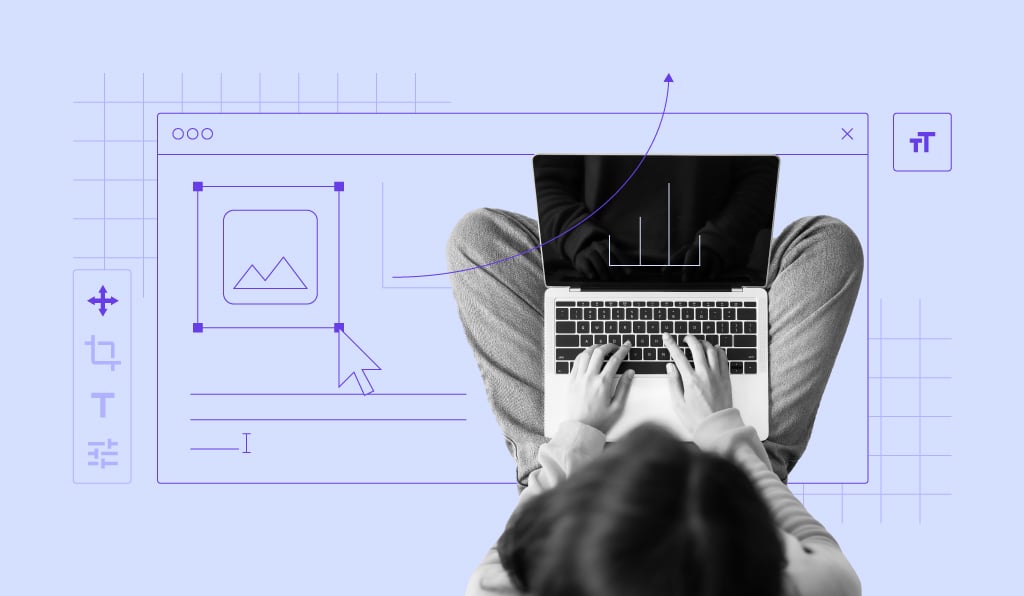Just How to Effectively Integrate Aesthetic Appeals and Capability in Web Style
When making a website, you need to strike an equilibrium between looks and capability. It's not practically looking good; your layout must also offer a function and overview individuals effectively. By concentrating on simpleness and instinctive navigating, you can produce an interesting experience. What elements absolutely enhance usability while preserving visual allure? Allow's check out the key principles that can cause an unified blend of charm and function.
Recognizing the Significance of Appearances and Capability
When you create an internet site, comprehending the balance in between visual appeals and functionality is crucial for developing a reliable individual experience. A visually attractive website grabs attention, however it's the functionality that maintains customers engaged. Site visitors will quickly lose interest and leave.Consider your target audience and what attracts them in if your website looks great yet is tough to navigate. You desire to develop a style that mirrors your brand while ensuring convenience of use. Structured layouts, instinctive navigation, and clear telephone calls to action can improve both visual appeals and capability.

Concepts of Efficient Internet Style
To create an effective website design, you require to abide by numerous vital concepts that improve both user experience and aesthetic allure. Focus on simplicity; a clean format assists customers navigate conveniently. Use a consistent shade scheme and typography to keep coherence across your website. This fosters experience and trust.Next, ensure your style is receptive. Individuals access internet sites on different devices, so your design ought to adjust perfectly. Take note of visual pecking order; emphasize important aspects with positioning, size, or color to direct individuals' focus.Finally, include ample white room. It prevents clutter and makes material extra absorbable. Remember, effective website design equilibriums looks and capability, so every layout option need to serve a purpose. By complying with these principles, you'll create a site that's not only visually attractive however likewise straightforward, ultimately keeping visitors engaged and encouraging them to return.
Prioritizing User Experience
When prioritizing individual experience, you'll desire to start by comprehending what your individuals really need. Simplifying navigation design can make a significant distinction in exactly how quickly they find what they're trying to find. Enhancing aesthetic hierarchy aids assist their interest to the most essential elements on your website.
Comprehending Customer Requirements
Comprehending individual requirements is essential for producing an appealing web experience that maintains site visitors coming back. To accomplish this, you should recognize the goals and preferences of your target audience. Begin by conducting customer research, like studies or interviews, to gather insights on what customers value most. When interacting with comparable internet sites, pay interest to their discomfort factors and challenges. This info permits you to customize your design, making certain functionality lines up with customer expectations. Furthermore, consider creating user personas that represent different sections of your target market, aiding you imagine their needs throughout the layout procedure. When you prioritize comprehending individual demands, you produce a web site that not just looks fantastic however likewise supplies a seamless, pleasurable experience that promotes commitment.
Streamlining Navigating Layout

Enhancing Visual Pecking Order
A strong visual power structure is important in leading customers with your site and guaranteeing they engage with vital web content. To attain this, utilize size, shade, and spacing tactically. Make crucial aspects like headings larger and bolder than body message, drawing attention right away. Use contrasting shades to highlight contact us to action, encouraging clicks. In addition, utilize sufficient white space to separate areas, making content digestible and inviting.Consider the circulation of info; organize components realistically, leading users' eyes from one indicate the following. Use aesthetic hints, like lines or arrows, to guide interest. By focusing on visual hierarchy, you boost user experience and raise the probability of conversions, ensuring your web site is both aesthetically pleasing and functionally reliable.
Color Theory and Its Effect on Usability
While picking the right shades for your website may look like a minor information, it substantially influences functionality and customer experience. Color influences exactly how customers perceive details and can prevent or improve navigating. As an example, contrasting colors can assist important aspects stand out, making it simpler for visitors to locate what they need.Additionally, think about the psychology of colors: blue typically inspires trust fund, while red produces urgency. Understanding your target market can assist your shade selections, guaranteeing they resonate well.Moreover, constant shade systems aid construct brand name identification, making your website much more memorable. Nevertheless, be careful-- a lot of shades can bewilder individuals. Stay with a minimal scheme that enhances your web content and keeps clarity.Incorporating ease of access is also necessary; confirm your color combinations are pleasant for those with aesthetic disabilities. By thoughtfully applying shade concept, you'll improve functionality and produce a much more engaging user experience.
Typography: Harmonizing Design and Readability
Color choices established the phase for your web site, but typography plays a just as important role in boosting customer experience. You desire your message to communicate clearly while also showing your brand's character. Start by picking font styles that are not only eye-catching however also understandable. Sans-serif font styles commonly work well for digital displays, as they're simpler to review at different sizes.Maintain a hierarchy by utilizing various font style sizes and weights; this overviews users via your material easily. Consider line spacing and letter spacing; also limited can frustrate viewers, while as well loosened can interrupt the circulation. Limitation your typeface choices to 2 or three to keep the style cohesive.Finally, constantly examine your typography across various tools and web browsers. What looks good on one display might not on another. Balancing style with readability guarantees that your message reverberates, keeping your target market educated and involved.
Responsive Layout: Making Appearances Work With All Devices
To assure your internet site looks terrific on any kind of gadget, you'll need to accept receptive design principles. This technique warranties your site adapts to different screen dimensions, giving an ideal customer experience. Start by utilizing fluid grids and adaptable images that scale perfectly. As opposed to dealt with dimensions, go with portions and family member devices, permitting your layout to adjust dynamically.Next, execute media inquiries in your CSS. These allow you apply different styles based on gadget characteristics, like screen width. In this manner, you can maintain aesthetic charm while guaranteeing functionality.Don' t forget touch targets; ensure buttons and links are simple to touch on smaller sized displays. Focus on important content, so users can easily navigate your website no matter their tool. By concentrating on these components, you'll develop an interesting, aesthetically appealing experience that meets the requirements of all users, whether they're on a desktop computer, tablet computer, or smartphone.
Conducting Usability Screening for Continuous Improvement
To enhance your website design, you need to establish clear use objectives that align with user needs. By performing individual tests, you can gather valuable responses on exactly how actual people communicate with your website. Evaluating these outcomes will certainly help you make educated improvements and develop a much more effective customer experience.
Defining Use Goals
While aesthetic appeals can draw customers in, defining functionality objectives is vital for ensuring their experience stays satisfying and smooth. Start by determining what you want individuals to achieve on your website (website design london Ontario). Consider their jobs, needs, and actions. Are they trying to find information, making an acquisition, or signing up for an e-newsletter? Establish clear criteria to gauge success, like task conclusion prices or time on task. Focus on intuitive navigating, accessible content, and receptive style to improve usability. Consistently revisit these objectives as individual assumptions evolve. By specifying use objectives, you create a framework for examining and boosting your website's performance. This focus on functionality not just enhances user fulfillment yet additionally enhances the overall effectiveness of your design
Carrying Out Individual Examinations
Performing customer tests is necessary for improving your internet site and ensuring it meets your audience's requirements. Start by determining your target users and creating a test plan that outlines your objectives. Make use of a mix of qualitative and quantitative methods, such as studies, interviews, and task-based observations, to collect comprehensive feedback. Invite participants to browse your site while you observe their communications and keep in mind any difficulties they encounter. Motivate open dialogue to record their thoughts and sensations about the layout and functionality. Keep sessions brief and concentrated, ensuring you cover essential areas without frustrating customers. Lastly, ensure to record all searchings for, as this info will be invaluable for making informed style choices that enhance both visual appeals and usability.
Evaluating Examination Results
Exactly how can you efficiently examine the results of your usability tests to drive continual improvement? Beginning by categorizing responses right into usual styles. Seek patterns in individual actions that highlight pain points or locations for enhancement. Use measurable data, like task conclusion prices and time on task, to gauge usability objectively. Do not fail to remember to consider qualitative insights from individual comments; they usually reveal underlying issues that numbers can not reveal. Focus on the most impactful searchings for and create workable things for your layout team. Keep in mind, it's regarding repeating-- execute changes, after that test again. This cycle of testing, evaluating, and refining helps you equilibrium aesthetics and performance, guaranteeing your site fulfills customer requirements successfully while maintaining aesthetic appeal.
Often Asked Concerns
How Do I Select the Right Color Palette for My Site?
To choose the appropriate shade palette for your internet site, consider your brand name's character, target audience, and psychological effect (website design london Ontario). Use shade psychology, develop harmony, and guarantee readability. Test mixes to see what resonates ideal with visitors
What Tools Can Aid With Web Layout Aesthetic Appeals and Capability?
You can use devices like Adobe XD, Figma, and Map out to improve your website design's aesthetic appeals and performance. These platforms use user-friendly user interfaces, cooperation features, and pre-made templates to simplify your innovative process and enhance your styles.
Just How Can I Include Animations Without Jeopardizing Functionality?
To include animations without endangering capability, focus on subtle results that improve customer experience. Usage CSS computer animations for smoother interactions, guarantee quick load times, and examination on numerous gadgets to maintain efficiency while adding aesthetic allure.
What Are Common Mistakes to Stay Clear Of in Website Design Appearances?
When creating, prevent messy layouts, bad shade options, and irregular typefaces. Don't overlook mobile responsiveness, as it can alienate users. Validate your style straightens with your brand, creating a smooth experience that involves visitors efficiently.
How Typically Should I Update My Website's Style for Optimal Appearances?
You ought to upgrade your internet site's design every 1-2 years to stay up to date with trends and keep optimal appearances. Regularly restoring visuals aids engage visitors and warranties your site continues to be easy to use and enticing. When you make a website, understanding the equilibrium in between aesthetic appeals and capability is crucial for creating an effective user experience. To develop an efficient internet style, you need to stick to several essential principles that boost both individual experience and visual charm. here Customers access web sites on different devices, so your style needs to adjust seamlessly. When prioritizing customer experience, you'll desire to begin by comprehending what your customers genuinely require. Beginning by conducting user study, like surveys or meetings, to collect understandings on what individuals value most.